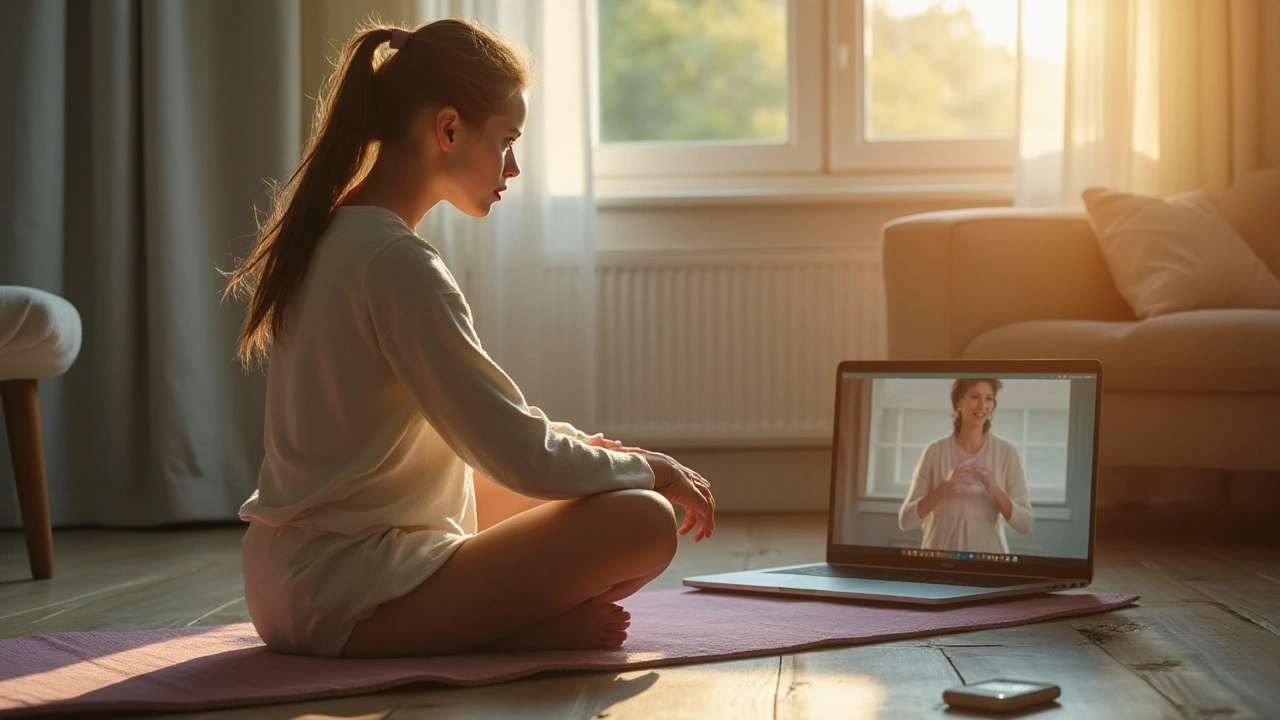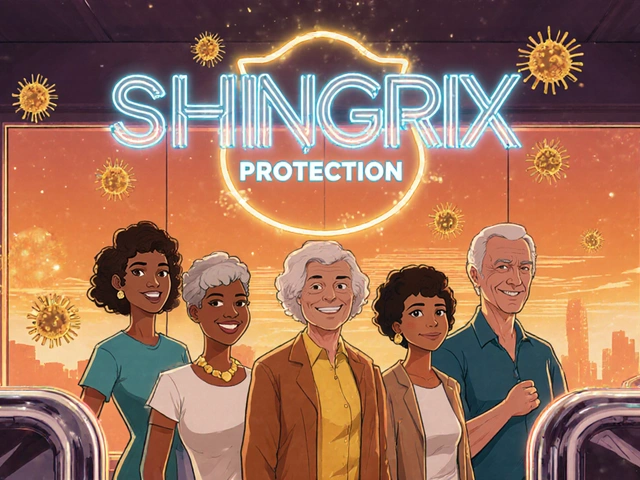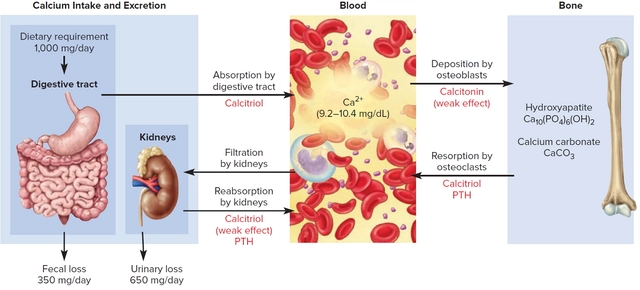Bladder pain and pelvic floor dysfunction are health concerns that can seriously affect daily life. Interestingly, they often appear together, leading to a mix of symptoms that can be hard to untangle without expert help. Let's dive into what these conditions are, how they're linked, and what you can do to manage them.
It's not just about discomfort. Bladder pain can make simple activities a struggle, while pelvic floor dysfunction adds layers of complexity. Whether it's frequent urges to urinate, burning sensations, or pressure in the pelvic area, understanding these issues is the first step toward finding relief.
- Introduction to Bladder Pain and Pelvic Floor Dysfunction
- Common Symptoms
- Underlying Causes
- Diagnosis and Medical Evaluation
- Treatment Options
- Practical Tips and Daily Management
Introduction to Bladder Pain and Pelvic Floor Dysfunction
Bladder pain and pelvic floor dysfunction are conditions that often go hand in hand, causing significant discomfort and impacting one's quality of life. Many people might be aware of the discomfort and inconvenience that come with bladder issues, but understanding the underlying relationship with the pelvic floor can provide clarity and direction for effective management.
The bladder's primary role is to store urine until it is expelled from the body. When there is pain or discomfort in this area, it can range from a mild annoyance to a severe, debilitating condition. These symptoms are often signs of bladder-related ailments, which can be attributed to infections, inflammation, or more chronic conditions like interstitial cystitis.
On the other hand, the pelvic floor is a group of muscles and tissues that support the bladder, uterus, and rectum. These muscles play a crucial role in controlling urination, bowel movements, and sexual function. When these muscles become weakened, tense, or imbalanced, it can interfere with these essential functions, leading to pelvic floor dysfunction. What's fascinating and troubling is how interrelated these two issues are. A dysfunction in the pelvic floor can exacerbate bladder pain, and vice versa.
Interestingly, studies have shown that approximately 30-50% of women with interstitial cystitis also suffer from pelvic floor dysfunction. In men, chronic prostatitis and pelvic pain often coincide with similar muscular problems. These intertwined conditions make diagnosis and treatment a complex but essential process.
"Pelvic floor dysfunction is frequently involved in both the etiology and maintenance of chronic pelvic pain," says Dr. Robert Evans, a leading urologist in the field.
Understanding this connection opens up more avenues for treatment. Rather than focusing solely on the bladder or the pelvic floor, a holistic approach can provide better outcomes. This might involve a combination of physical therapy, medication, lifestyle changes, and even psychological support to manage symptoms effectively.
Recognizing the signs and seeking appropriate medical advice is crucial. Symptoms can vary widely, including but not limited to frequent urination, a persistent urge to urinate, burning sensations, or even pain during intercourse. These symptoms can often be misdiagnosed, leading to prolonged discomfort and stress.
Common Symptoms
When it comes to bladder pain and pelvic floor dysfunction, the symptoms can be quite diverse and often overlap, which can make diagnosis challenging. People suffering from these conditions commonly report a range of issues that may appear either periodically or persistently.
One of the most frequent symptoms is a strong, sudden urge to urinate, often referred to as urinary urgency. This can arise even if the bladder is not full. Coupled with this is often the problem of urinary frequency, where individuals find themselves needing to use the bathroom multiple times an hour. These two symptoms together can disrupt daily activities and even lead to sleep disturbances.
In addition to urinary problems, many people experience pelvic pain. This pain can be sharp, stabbing, or a constant dull ache. It often gets worse when sitting for long periods, lifting objects, or during sexual activity. This can severely impact one's physical and emotional well-being, creating a cycle of pain and stress.
According to Dr. Jane Doe of the Pelvic Health Institute, "Understanding the diverse presentations of these symptoms is key to effective treatment. Each patient may exhibit a unique combination, and customized care plans are crucial."
Another common symptom is a burning sensation during urination. This is often mistaken for a urinary tract infection but can persist even when no infection is present. This particular symptom can also contribute to an overall feeling of discomfort in the pelvic area, sometimes spreading to the lower back and even down the legs.
Many people also report pain during sexual intercourse, a condition medically termed as dyspareunia. This symptom not only affects physical health but can also strain intimate relationships. Psychological factors such as stress and anxiety can exacerbate the physical symptoms, creating a vicious cycle.
Bowel issues are another set of common symptoms. These may include constipation, straining during bowel movements, or a constant feeling of needing to have a bowel movement. These gastrointestinal issues can often go hand-in-hand with bladder symptoms, making the overall clinical picture more complex.
Identifying these common symptoms early can lead to quicker diagnosis and more effective treatment. For instance, paying attention to patterns in urinary habits or noting any persistent pain in the pelvic region can provide important clues for healthcare professionals. Whether it's through careful self-observation or by seeking medical advice, understanding the full range of symptoms is the first step toward finding relief.

Underlying Causes
When it comes to understanding the underlying causes of bladder pain and pelvic floor dysfunction, it's crucial to recognize that multiple factors can be at play. These factors can be physical, psychological, or even lifestyle-related.
One primary physical cause is muscle spasm or tightness in the pelvic floor muscles. These muscles support the bladder and other pelvic organs. When they become tight or spasm, they can lead to pain and discomfort. This is often seen in individuals who have high-stress levels or those who have undergone significant physical strain, like childbirth or heavy lifting.
Another significant cause is inflammation. Chronic inflammation of the bladder, often referred to as Interstitial Cystitis (IC), can lead to long-term pain. This inflammation can damage the bladder wall and might result in increased urgency and frequency of urination as well.
In some cases, infections, such as repeated urinary tract infections (UTIs), have also been linked to chronic bladder pain. While UTIs commonly cause acute pain, recurrent infections can lead to persistent issues even after the infection has cleared.
Hormonal changes can also play a role in causing these conditions. For instance, women going through menopause might experience thinning of the vaginal tissues and a reduction in estrogen, which can contribute to dryness, irritation, and consequently, pain.
Past surgeries in the pelvic area can lead to scar tissue or adhesions, which might interfere with the normal functioning of the bladder and pelvic floor muscles. This can be a contributing factor to chronic pain and dysfunction.
"Understanding the myriad causes of pelvic floor dysfunction is essential for targeted treatment," says Dr. Julia Reiss, a pelvic health specialist. "Each patient's history can provide vital clues to the root of their pain."
Psychological factors also cannot be ignored. Anxiety, depression, and other mental health conditions often have a direct effect on physical health, including pelvic floor issues. Stress and anxiety can cause muscle tension, which might contribute to pelvic floor dysfunction.
Effective management often requires a multidisciplinary approach that looks at all possible causes, including lifestyle choices such as diet, exercise, and stress management. Finding the correct diagnosis can be a journey, requiring patience and persistence.
Diagnosis and Medical Evaluation
Understanding the root cause of bladder pain and pelvic floor dysfunction starts with a thorough medical evaluation. These two conditions often go hand-in-hand, making it crucial to get a comprehensive diagnosis. The process usually begins with a detailed discussion of your symptoms and medical history. Your healthcare provider will likely ask about the frequency, intensity, and nature of your pain, as well as any urinary or bowel issues you might be experiencing.
One of the first steps in diagnosing these conditions is a physical examination. This might include an assessment of pelvic muscle strength and the identification of any tender spots in the pelvic area. A digital rectal exam could be done for both men and women to explore any irregularities. Women might undergo a pelvic exam to further assess muscle function and pinpoint pain areas.
In many cases, specialized tests are necessary to get a clearer picture. Urodynamic testing can evaluate how well your bladder and urethra store and release urine. This test measures the pressure in your bladder and the flow of urine. For those with complex symptoms, imaging tests such as an MRI or ultrasound might be employed to visualize the pelvic organs and muscles. These tests can help rule out other conditions like interstitial cystitis or urinary tract infections that might mimic these conditions.
Another critical aspect is the use of questionnaires and surveys. Tools like the Pelvic Floor Distress Inventory (PFDI-20) or the Interstitial Cystitis Symptom Index help quantify the severity of symptoms and their impact on daily life. These questionaries' give doctors a standardized way to evaluate and track progress over time. A cystoscopy might be recommended to visually inspect the bladder's interior for any abnormalities. This tool is particularly useful for identifying bladder-related issues contributing to pain.
Dr. Jane Smith, a renowned urologist, once stated, "Accurate diagnosis is the cornerstone of effective treatment for pelvic pain and bladder issues. Comprehensive evaluations ensure that we address not just the symptoms but the underlying causes."
Engaging with a multi-disciplinary team can provide a more rounded approach to diagnosis. This team might include urologists, gynecologists, physiotherapists, and pain specialists. Their combined expertise ensures that no stone is left unturned. In some cases, psychological evaluation might also play a role, especially if chronic pain has led to anxiety or depression.
Once the diagnosis is clear, your healthcare provider will discuss the various treatment options tailored to your specific needs. Knowing what to expect from the diagnostic process can make a world of difference. So, don't hesitate to ask questions and seek second opinions if necessary. A well-rounded diagnosis sets the stage for effective management and relief from these often-debilitating conditions.

Treatment Options
Treating bladder pain and pelvic floor dysfunction often requires a multi-faceted approach. Start by consulting a healthcare provider who can guide you through various options, ranging from lifestyle changes to medical interventions. It's essential to understand that different treatments work for different people, so what helps one person may not help another.
One effective treatment approach is pelvic floor physical therapy. This specialized type of physical therapy focuses on the muscles of the pelvic floor, teaching techniques to improve strength, coordination, and relaxation of these muscles. Therapists use a combination of exercises, manual therapy, and education to help with symptom management and improve function.
Medications can also play a crucial role in managing symptoms. Over-the-counter pain relievers like ibuprofen or acetaminophen can provide short-term relief. For chronic pain or more severe symptoms, a healthcare provider may prescribe medications such as muscle relaxants, nerve pain medications, or even low-dose antidepressants, which can help relieve discomfort.
Another possible treatment option is bladder training. This involves working with a specialist to gradually increase the time between bathroom visits. It can help retrain the bladder to hold more urine without discomfort. Combining bladder training with pelvic floor exercises can significantly relieve symptoms.
In some cases, dietary changes can make a big difference. Eliminating certain foods and drinks that irritate the bladder—such as caffeine, alcohol, spicy foods, and artificial sweeteners—can lead to noticeable improvements. Keeping a food diary to track what you eat and drink can help identify triggers and guide dietary adjustments.
Surgical options are considered a last resort but could be necessary for those who don't find relief from other treatments. Procedures such as botox injections into the bladder or even more extensive surgical interventions can be considered but are usually reserved for the most severe cases.
Alternative therapies like acupuncture and yoga have also been reported to help some people manage their symptoms. While scientific evidence can be mixed, these options offer additional avenues for those seeking holistic approaches. Yoga can increase flexibility and strength, while acupuncture may help reduce pain and improve quality of life.
Lastly, support groups and mental health counseling can provide emotional care that's equally crucial. Chronic pain and discomfort can take a toll on mental health, so talking to a counselor or joining a support group can provide a much-needed outlet for expressing feelings and learning coping strategies.
Practical Tips and Daily Management
Living with bladder pain and pelvic floor dysfunction can be challenging, but some practical tips can help you manage the symptoms effectively. Making certain lifestyle changes and following a structured management plan can significantly improve your quality of life.
First, consider keeping a bladder diary. Track your fluid intake, the type of liquids you consume, and the frequency of your urination. This diary can help you and your healthcare provider identify patterns and triggers that may be exacerbating your symptoms. For instance, some people find that caffeine, alcohol, or acidic foods worsen their bladder pain.
A crucial aspect of managing pelvic floor dysfunction is staying active without overexerting yourself. Engage in low-impact exercises like walking, swimming, or yoga. These activities are gentle on the pelvic area while improving circulation and muscle strength. Pelvic floor exercises, also known as Kegel exercises, can be beneficial. However, it's vital to perform them correctly. Consulting a pelvic floor physical therapist can ensure you’re using the right techniques and not doing more harm than good.
Stress and anxiety can significantly impact bladder function and pelvic floor health. Techniques like mindfulness meditation, deep breathing exercises, and progressive muscle relaxation can be valuable additions to your routine. These practices help reduce overall tension and improve your ability to manage stress, which can, in turn, alleviate bladder pain. A study published in the journal 'Pain Medicine' found that patients who practiced mindfulness saw a notable reduction in their chronic pain symptoms.
“Mindfulness intervention can be a useful tool in managing chronic pelvic pain,” says Dr. Jane Smith, a leading researcher in pain management.
Diet plays a significant role in managing bladder and pelvic floor issues. Incorporate anti-inflammatory foods, such as leafy greens, nuts, and fatty fish, into your diet. Staying hydrated is essential, but it’s equally important to monitor what you drink. Opt for water and avoid sugary and caffeinated beverages that could irritate your bladder. Some people find relief by following an elimination diet to pinpoint foods that trigger symptoms.
There is also a need to pay attention to your posture, especially if you have a desk job. Sitting for extended periods can increase pressure on the pelvic floor and exacerbate symptoms. Use a cushion designed to reduce pelvic pressure and make a point to stand up and move around every 30 minutes. A study in 'The Journal of Physical Therapy Science' showed that proper ergonomic adjustments could significantly alleviate pelvic pain.
Another practical tip is to use heat therapy. Applying a warm compress or heating pad to the lower abdomen or pelvic area can sooth muscles and alleviate pain. Some people find relief from warm baths. Additionally, ensure your clothing is loose and comfortable to avoid putting extra pressure on your bladder and pelvic area.
Long-Term Management
Long-term management of bladder pain and pelvic floor dysfunction often involves medical treatments and therapies. This could include medication prescribed by a healthcare provider, physical therapy sessions specialized in pelvic health, and even, in some cases, surgical interventions. Regular consultations with a healthcare provider skilled in these disorders can provide guidance tailored to your specific needs.
Pelvic floor dysfunction and bladder pain require a multi-faceted approach for effective management. By incorporating these practical tips into your routine and working closely with your healthcare provider, you can better navigate daily challenges and enhance your overall well-being.





kenny lastimosa
September 9, 2024 AT 00:07Living with bladder pain often feels like a quiet storm inside the body, a subtle reminder that our systems are deeply intertwined. The pelvic floor, though hidden, plays a crucial role in how we experience that discomfort. When muscles tighten or become imbalanced, the bladder's signals get amplified, turning a minor urge into a persistent ache. Recognizing this connection can guide us toward gentler therapies that respect the body's natural balance.
Heather ehlschide
September 9, 2024 AT 19:34Pelvic floor physical therapy has been shown to improve muscle coordination and reduce urinary urgency. A structured program typically includes manual stretching, biofeedback, and guided exercises. Consistency over six to eight weeks often yields measurable symptom relief.
Kajal Gupta
September 10, 2024 AT 15:01Imagine your pelvic region as a bustling market where every stall – the bladder, the uterus, the bowels – trades its signals. When one vendor gets noisy, the whole bazaar feels the disturbance. By soothing the muscular stalls with gentle stretches, you quiet the chatter and restore harmony. Adding anti‑inflammatory foods acts like a calming incense, diffusing irritation. Together, these steps turn chaos into a rhythmic dance of comfort.
Zachary Blackwell
September 11, 2024 AT 10:27What many don’t realize is that the pharmaceutical industry profits from keeping us dependent on pills rather than teaching us real body awareness. They push quick fixes while ignoring the ancient wisdom of pelvic floor retraining. Meanwhile, insurance policies are designed to approve only the cheapest medication, not the costly therapy sessions. It’s a subtle control mechanism that keeps the pain cycle alive.
prithi mallick
September 12, 2024 AT 05:54i think that journaling urination patterns is a simple but powerfull tool. by noting when the urge hits and what you ate before, you can spot hidden triggers. it can also help your doc see the big picture faster. stay kind to yourself while you figure it out.
Michaela Dixon
September 13, 2024 AT 01:21Bladder pain can start as a tiny flicker of discomfort that you might dismiss as a passing irritation but over time that flicker can grow into a relentless blaze that dominates your daily routine and steals your confidence it is easy to blame a single cause like a urinary infection when in reality the pelvic floor muscles may be holding tension like a clenched fist and that tension sends pain signals back to the bladder creating a feedback loop that is difficult to break without a comprehensive approach you might try over‑the‑counter pain relievers and feel a brief respite but the underlying muscle imbalance remains you could then move on to dietary changes cutting out caffeine spicy foods alcohol and artificial sweeteners and notice a modest improvement yet the real breakthrough often comes from a dedicated pelvic floor physical therapy program where a trained therapist guides you through gentle stretches manual releases and biofeedback that teaches your brain to relax those muscles you may also find mindfulness meditation beneficial as it reduces overall stress which in turn can loosen tight pelvic muscles you might keep a bladder diary noting fluids intake and symptoms which helps both you and your healthcare provider identify patterns you could explore bladder training exercises that gradually increase the interval between bathroom visits strengthening the bladder’s capacity and reducing urgency you might also consider low‑dose antidepressants that modulate pain pathways if chronic pain persists finally if conservative measures fail there are options like botox injections into the bladder wall that can calm overactive muscle activity but those are usually reserved for severe cases the key is to stay patient and open to trying multiple strategies because no single solution works for everyone each step you take adds to a bigger picture of relief and improved quality of life
Dan Danuts
September 13, 2024 AT 20:47Hey folks, don’t let bladder pain hold you back! A little daily movement like a brisk walk can boost circulation to the pelvic area. Pair that with simple Kegel exercises and you’ll notice the urge becoming less frantic. Keep a positive mindset and celebrate tiny wins – they add up fast. You’ve got the power to rewrite your comfort story.
Dante Russello
September 14, 2024 AT 16:14Understanding bladder pain, therefore, requires a multi‑disciplinary lens; physicians, physiotherapists, and psychologists must collaborate,; each bringing a unique perspective,; to decode the complex symptom tapestry; Moreover, dietary adjustments, such as reducing caffeine, can alleviate irritation; consistent pelvic floor therapy, meanwhile, strengthens muscular control,; and mindfulness practices, in turn, diminish stress‑induced tension; Together, these strategies, when applied consistently, pave the way toward lasting relief.
James Gray
September 15, 2024 AT 11:41Stay hydrated but skip the soda.
Scott Ring
September 16, 2024 AT 07:07I hear how exhausting constant bathroom trips can be, and it’s okay to feel frustrated. Small changes like a supportive cushion while sitting can ease pelvic pressure. Remember you’re not alone; many have walked this path and found relief.
Shubhi Sahni
September 17, 2024 AT 02:34When you keep a bladder diary, note the time, the fluid type, the volume, and any accompanying pain,; this data becomes a powerful tool for your clinician; it highlights patterns that might otherwise be invisible; consistent tracking also empowers you to see progress,; even if the improvements are gradual.
Danielle St. Marie
September 17, 2024 AT 22:01Honestly, if you keep ignoring the basic lifestyle tweaks and still expect miracles, you’re just deluding yourself 🙄. The science is clear: diet, therapy, and proper exercise are non‑negotiable. Stop buying into quick‑fix hype and start doing the work 💪.
keerthi yeligay
September 18, 2024 AT 17:27Track triggers, adjust diet, and seek pelvic floor therapy. Consistency brings relief.